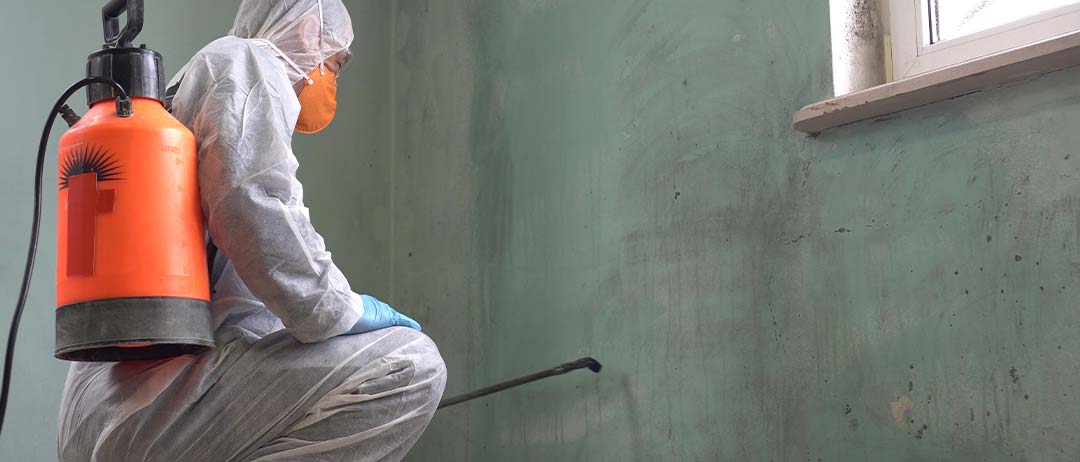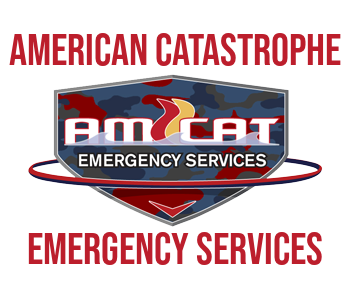Dealing with Mold & Moisture

Our Mold Remediation Process
Mold growing inside a building is a serious situation that requires immediate action. It is a common
problem for home and business owners to have, because it can occur any time there has been a water leak, flooding, condensation, or poor ventilation. Once alive and growing, mold colonies can cause
chronic respiratory and sinus illness in building occupants.
If you see discolored areas on the walls, ceiling, or carpet, you know you have a mold problem. Other
red flags that signal mold is flourishing in your inside environment include a musty odor or a feeling of
dampness in the air. Luckily, help in the form of professional mold remediation from American
Catastrophe Emergency Services Group is only a phone call away.
Mold Removal vs. Mold Remediation
Some mold removal companies specialize in just that: removing the existing mold you see in your home.
While this service may seem affordable at first glance, it will cost more in the long term, as you continue
to battle mold in the future. A simple removal of the existing mold on the surfaces of your home is not
enough. Without cleaning the air of spores and addressing areas of moisture where they can land and
grow, your mold problem is certain to return eventually.
Mold remediation is a more holistic process in which our technicians employ knowledge of the life cycle
of the mold species to prevent it from reestablishing itself. Besides removing existing mold from the air
and surfaces, we also inspect your home for sources of water damage and high humidity levels. Since it
is scientifically impossible to remove all spores from the air, we focus on creating a plan to return them
to the same natural levels as healthy, outdoor air.
Mold Remediation Process
No two homes are exactly alike, and we take pride in catering our process to your unique situation. Here
are the basic steps we follow in the process of mold remediation, so you will know what kind of quality
service to expect.
Step 1: Answer Your Call for Help
Once you suspect mold, contact us any hour of the day or night at 800-430-5838. A member of our
customer service department will ask you a few questions to get a better idea of the type of mold you
have and the extent of the damage it has caused. Within 15 minutes, we will assign a team of
professionals to your case.
Step 2: Inspect the Home and Assess Damage
Within one hour of your call, expect the arrival of an operation manager to inspect your home or
business for evidence of mold. We look in hidden areas that may not be obvious to the casual observer.
We also collect samples of the mold to determine which species present through third-party laboratory
cultures.
Step 3: Contain Existing Mold
Once the presence of mold is established, our first task is to keep it from spreading throughout the
building. We turn off fans and air conditioning systems, and then isolate the area with negative air
chambers and other physical barriers. These strategies help keep the mold in one place so we can
eliminate it more easily.
Step 4: Filter the Air
We clean your indoor air with a HEPA filter and powerful vacuums that essentially scrub the air until it is
free from contaminants. This step is essential to removing spores and preventing the regrowth of mold.
Our goal is to return the level of airborne spores to the natural level of the outside environment. Most
customers notice an immediate improvement in air breathability.
Step 5: Remove Mold and Infested Building Materials
We do the dirty work of disposing of building materials such as drywall, insulation, wallpaper, and
carpeting that we cannot salvage through intensive cleaning. We clean all other contaminated
structures with antifungal and antimicrobial treatments to remove existing mold and prevent new
spores from establishing themselves.
Step 6: Clean Building Contents and Personal Belongings
You can trust American Catastrophe Emergency Services Group to clean furniture, clothing, curtains, and
other personal items inside your home or business. We use various techniques including wet and dry
cleaning, foams, abrasions, and immersions, depending on the type of material. We also use fogging to
remove the musty smell associated with a mold infestation.
Step 7: Restore the Building to Pre-Mold Condition
The last step is to complete the restoration by installing sound building materials in place of the
damaged ones. Depending on the level of infestation, reconstruction may involve rebuilding entire
rooms or simply replacing panels of drywall, reinstalling wallpaper, or replacing portions of carpeting.
We are not satisfied until there is no noticeable trace of a previous mold infestation.
Our Service Areas:
Take the Quiz to Learn More
Questions?
Water restoration is a specialized service that removes water from your home and restores it to a livable, pre-damaged condition. Restoring a home after a water damage emergency must happen quickly. Standing water and moisture create a perfect environment for bacteria and mold growth.
If your home is subject to serious water damage, due to burst pipes, flooding, fire-extinguishing water hoses or some other unforeseen catastrophe, we must locate the cause of the water leak to turn off or terminate source of water
leakage. Remove surface water then start drying methods before we can start to do a Thorough clean of the compromised area.
more often than usual water damaged causes drywall to be replaced, depending on the rating of the drywall installed / used. Wet drywall will lose its structural integrity if left alone for long enough period of time it will develop mold spores, between the insulation and the drywall.
Unfortunately, there is no exact estimate on how long the drying process would take. But, in general, a water damaged Home or Office can dry out for around 5-7 days. In some cases, it would take as little as 2-3 days, and other times it takes several weeks to dry out a home or Office.
Molds have the potential to cause health problems. Molds produce allergens (substances that can cause allergic reactions), irritants, and in some cases, potentially toxic substances (mycotoxins). Inhaling or touching mold or mold spores may cause allergic reactions in sensitive individuals.
$500 to $4,000 to remove mold from crawlspaces only. $2,000 to $6,000 to remove mold from ducts, crawl spaces, walls, and attics. $10,000 to $30,000 (or more) to repair widespread structural damage.

